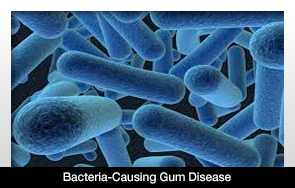 |
When it comes to Halloween candy, even if it’s costumed as a healthier choice (think chocolate-covered granola bars), nutrition experts say: Boooooo.
“The bottom line is that no candy is good for you,” says registered dietitian Dawn Jackson Blatner, author of The Flexitarian Diet. “I don’t care if it has one extra gram of fiber or protein. What we’re talking about is indulgence, enjoyment, and empty calories. Enjoy the gluttony of the season, but maybe not for too long—just for a couple days or a week.”
Still, not all candies are equally bad. A snack-size Reese’s Caramel Cup will cost you 100 calories, compared to 25 for a pack of Smarties. Sugar-free gum (no, it won’t make you popular) protects against tooth decay, while hard and sticky candies increase that risk. And Skittles and Caramel Twix have more sugar than Milky Way and Baby Ruth bars.
So consider these bite-size options when you’re shopping for this year’s trick-or-treaters—or sifting through your child’s loot
Pixy Stix, Sweet Tarts
Both dissolve quickly, protecting against cavity-causing bacteria. Candy that melts and disappears quickly is best for your teeth—avoid hard treats that linger in your mouth, according to American Dental Association guidelines. The longer you spend chewing or sucking on candy, the greater the likelihood of tooth decay. Avoid sticky candies like gummy bears, which cling to your teeth and take longer to be washed away by saliva.
Chocolate
And dark is best, says registered dietitian Karen Ansel, an American Dietetic Association spokeswoman. Cocoa contains flavanols, antioxidants that may improve heart health and blood flow, and lower blood pressure and cholesterol. The benefits of dark chocolate depend largely on how it was processed, but it’s still a better bet than milk chocolate. But if you prefer the latter, try trick-or-treat size Milk Duds (53 calories per serving)—yes, the caramel may stick to your teeth, but calorie-wise it’s a reasonable option, dietitians say. So, too, are mini 3 Musketeers (63 calories), which are more filling than their size may suggest, says Jackson Blatner. On the flip side, watch out for Whoppers—the snack-size boxes of chocolate-coated malted milk balls contain a whopping 100 calories per package. And one trick-or-treat size 0.75-oz Reese’s Peanut Butter Cup checks in at 110 calories.
Hershey’s 100-calorie treats
Options include York Peppermint Wafer Bars, Pretzel Bars, and Whipped Vanilla Bars. Compare that to regular-size Hershey bars, which run about 210 calories each.
Nestle’s Wonka Laffy Taffy, Starburst
In the non-chocolate world, these are among the best bets, calorically speaking—both contain between 30 and 40 calories. Other options include Twizzlers, Nerds and Mike and Ike jelly beans. All have 50 calories or fewer per serving.
General Mills Betty Crocker Fruit Gushers
Flavors include strawberry, fruit punch, and triple berry, and each low-fat, gluten-free pouch contains 90 calories. The tiny amount of fat is unsaturated, not saturated or trans. And the first ingredient listed for all the flavors is pears, meaning there’s a decent amount of the fruit inside (packaged food ingredients are required to be listed in descending order of predominance and weight). One serving of Gushers offers 10 percent of the daily recommended vitamin C—something many kids get too little of, Ansel said.
Lollipops
Don’t shy away because of the sugar content. Treats like lollipops take a long time to finish, which could slow the flow.
“In the time it takes kids to chow through that whole bag of candy, they could have been working on a lollipop and been equally happy,” Ansel said.
Granola bars
If the first ingredient listed is whole oats, these are likely a good option, Ansel said. But double-check that there’s no hydrogenated fats or high-fructose corn syrup. Granola bars sweetened with brown sugar are best.
Chocolate-covered cranberries, raisins, or cherries
Hidden underneath that thin layer of chocolate is a healthful surprise: “It’s a great way to get some fruit in your kids,” Ansel said.
For example, a handful of chocolate-covered raisins offers calcium, iron, and fiber.
Sugar-free gum
It helps keep your teeth clean by stimulating production of saliva. In fact, it’s recommended by the ADA as a best-bet Halloween treat. Wrigley’s sugar-free gum comes in flavors like strawberry shortcake, mint chocolate chip, and key lime pie. One stick contains just five calories.
If you choose to indulge, keep portion control in mind: “The key is quantity, not ingredients,” said Ansel.
If the kids want candy for breakfast, lunch and dinner, teach moderation by including it as a snack or one part of a meal, rather than making it the main event. And it’s OK to pack a few fun-size candies in the school lunch along with the carrots and fruit. As Ansel said: “It’s Halloween, and it does only come once a year.”
 |










